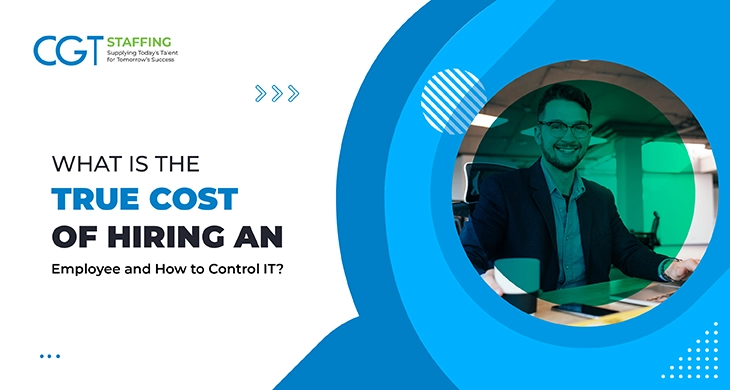Making sound financial decisions is key to business success. One of the most important spending decisions an organization can make is an investment in the right talent. As experienced mortgage recruiters can attest, spending on sourcing qualified individuals enables and drives business growth.
On the other hand, an inefficient hire often results in a ripple effect of negative consequences. To better emphasize the importance of effective recruitment and onboarding, this blog explores the true cost of hiring an employee.
Table of Contents
Understanding the Cost of Hiring an Employee
Every talent acquisition strategy requires some degree of spending to fill business needs as they arise. That does not mean the hiring process should be immune to cost management, however. As such, managers could benefit from learning more about the costs associated with hiring, recruiting, onboarding, and retaining talent. Consider the following:
Recruitment Teams and Partners
Most businesses maintain an in-house recruiting team, while others have a mix of internal recruiters as well as third-party staffing firms. A business in Texas, for example, could have its HR personnel conducting interviews, while coordinating with a staffing agency in Pittsburgh for sourcing and screening talent.
The recruitment organization and its third-party personnel incur costs during the hiring process, offsetting the comprehensive expense of in-house recruitment. It’s important to examine the payrolling costs of an internal team relative to the service fees paid to a third-party staffing firm.
Recruitment Software and Platform Fees
Modern business functions leverage useful software and digital tools to be more efficient at what they do. HR is no different; most HR branches will rely on software that helps them manage applicants, candidates, communication, evaluation, interview appointments, and so on.
However, these systems almost always require a recurring subscription fee. At the same time, recruiters may advertise job postings on platforms that require a fee per post.
The subscriptions and fees associated with various tools, management information systems, and platforms can become a significant expense. This is another critical element to consider when evaluating the cost of hiring an employee.
Due Diligence and Background Checks
The hiring process is far more expansive than interviewing and shortlisting candidates. Businesses need to anticipate additional expenses, including the performance of critical due diligence and background screenings. Employers that are ignorant of a potential candidate’s spotty professional record, criminal history, harassment allegations, and the like could endanger the rest of their workforce.
These background checks are a key, often unavoidable, expense. On the other hand, they may preclude an extensive workplace investigation down the road.
Screening, Training, and Onboarding
During recruitment drives, especially with high-volume hiring, recruiters have to deal with a very large number of applicants. Not all of them are suitable for a given role, which means recruiters have to spend more time narrowing down a large number of applicants into a more manageable number of promising candidates.
If hired, there may be further costs associated with training and onboarding the new employee. The time and effort spent on screening, hiring, training, and onboarding can result in a significant expense.
Compensation and Benefit Plans
Compensation and benefits are among the most significant expenditures of any business. For organizations to function, thrive, and grow, they need a motivated and engaged workforce. Offering healthy compensation and benefits plans is a key factor in motivating existing employees and attracting new talent.
Maintaining a competitive balance between appealing plans and sustainable plans is essential. Otherwise, a business may either not be able to attract new employees or incentivize its existing workforce. That is why businesses must pay attention to their payroll expenses and evaluate if they are spending efficiently or if some changes are in order.
Controlling Hiring Costs
Hiring new talent enables a business to secure the innovation, diversity, and potential leadership that drives sustainability. However, to be successful in the long term, businesses must also efficiently manage the costs of hiring and retaining talent. For that to happen, the first step is to scrutinize how much they spend on hiring.
It may also prove useful to examine your organization’s spending on employee engagement and retention. Such a review should yield an accurate understanding of hiring effectiveness. If the costs of hiring and retention are threatening business operations and sustainability, austerity measures should be applied to each of the stages discussed above.
The costs of the hiring process must be managed as effectively as any other business function. Otherwise, inefficiency and avoidable costs can quickly erode both revenue and profit.
